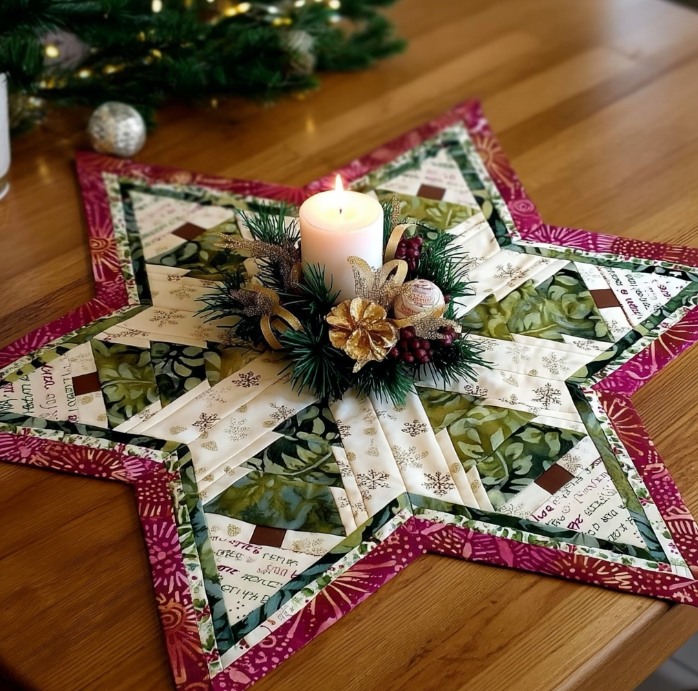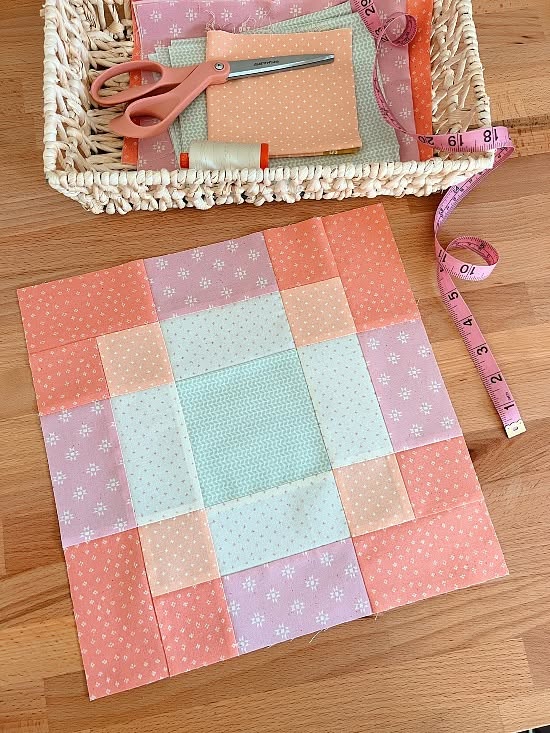
From beginners to experienced quilters, there’s something deeply satisfying about creating beauty from simplicity. This Simple Block Makes a Beautiful Quilt is more than just a statement—it’s a celebration of how basic units can lead to extraordinary results.
One of the most beloved aspects of quilting is watching small, repeated elements come together to form a striking and cohesive masterpiece.
Many quilters fall into the trap of thinking that complexity equals beauty. But in truth, a thoughtfully arranged simple block—whether it’s a nine-patch, log cabin, or half-square triangle—can create a quilt that looks far more intricate than it really is. This idea opens the door for beginner-friendly designs that don’t sacrifice charm, style, or creativity.

This Simple Block Makes a Beautiful Quilt because it teaches us to appreciate the power of color placement, fabric choice, and repetition. It reminds us that quilting isn’t about perfection or complexity, but rather about expression and joy.
If you’re looking to start a new quilt or are exploring fresh ideas for a gift or personal project, read on to discover how one simple block can transform your quilting journey.
When planning your project, the first question is: what block should I use? With so many patterns out there, picking the right one can be overwhelming. Fortunately, simplicity is your friend.
The nine-patch block is a classic choice. Made from three rows of three squares, it’s easy to cut and piece, and provides endless layout options depending on your fabric choices.
Another favorite is the half-square triangle (HST). It’s simple to make by sewing two squares together diagonally and cutting them apart. HSTs can be arranged in stunning patterns like chevrons, stars, or diamonds.
Strip blocks are another beginner-friendly option. You sew together strips of fabric, then cut them into square units. This method is perfect for using up scraps or showcasing coordinating colors.
If you like curves or want something just a bit more decorative, try the snowball block. It’s mostly a square with small corner triangles that create a rounded look when assembled.
The rail fence block uses strips arranged side-by-side, often with alternating direction to create movement. It’s quick, effective, and modern-looking.
No matter which you choose, remember: this simple block makes a beautiful quilt because of how you use it. Fabric, contrast, and repetition are key.
Now that you’ve chosen a block, it’s time to explore how to take it to the next level. Even the most basic design can look high-end with the right strategies.
Color selection makes all the difference. Choose two to three main colors and add a neutral to balance the palette. This allows your block shapes to stand out clearly without visual chaos.
Fabric texture and print scale add dimension to your quilt. Mixing solids with florals, or small dots with stripes, can give each block more personality while keeping the overall design cohesive.
Try using negative space. If you space your blocks apart with large sashing or blank backgrounds, it allows each unit to shine. Minimalist quilts are both modern and elegant.
Rotate and mirror blocks across rows. Simple HSTs or four-patch units look dynamic when flipped or rotated in sequence.
Quilting patterns also contribute to the final look. A simple straight-line quilted design or free-motion swirls can turn a plain block layout into an eye-catching piece.
Lastly, consider scale variation. Try creating one large focal block in the center, then surround it with smaller versions of the same design for visual interest.
Let’s look at some real-world examples of how this simple block makes a beautiful quilt through clever planning and layout.
A quilt made entirely of log cabin blocks, arranged in a barn-raising pattern, creates a dramatic spiral effect. The beauty lies in the alternating light and dark fabrics.
Irish chain quilts use nine-patch blocks in alternating rows to form a chain-link design across the surface. It’s a timeless favorite that’s easy to sew and visually stunning.
The disappearing nine-patch is another fantastic option. You start with a simple block, then slice and rearrange it for a design that looks intricate but is incredibly fast to make.
Charm square quilts, using only precut 5×5″ squares sewn together in rows, are as simple as it gets—yet with color coordination, they become charming and professional-looking.
A rail fence quilt with alternating color directions creates waves of motion. It’s minimal in construction but highly decorative when finished.
Even a quilt using just one solid fabric per block, arranged with thought and care, can become a bold statement piece for your home or gifting.
Choosing simple blocks doesn’t just save time—it offers many creative and practical advantages. Here’s why this simple block makes a beautiful quilt on every level.
First, simple blocks allow for faster progress. If you’re short on time, you’ll appreciate how quickly you can cut, piece, and assemble each section.
These projects are budget-friendly. You can often use scraps, fat quarters, or leftover jelly rolls to complete a full quilt with minimal additional cost.
They’re perfect for beginners. Learning accurate piecing, pressing, and layout with a simple block builds confidence and core quilting skills.
Consistency and repetition make simple block quilts excellent for meditation and relaxation. The rhythm of sewing identical units is soothing and productive.
You can easily adapt these blocks into different quilt sizes—just adjust the number of rows or block dimensions to suit baby quilts, lap quilts, or king-size bedspreads.
Lastly, they are ideal for teaching others. Simple block quilts are fantastic group projects, whether you’re hosting a workshop or crafting with friends or children.
1. What is the best block for a beginner quilter?
The nine-patch is often considered the easiest block to start with due to its straight seams and clear structure.
2. Can I make a professional-looking quilt with simple blocks?
Absolutely. With thoughtful color choices and neat piecing, simple blocks can look just as impressive as complex designs.
3. How many blocks do I need for a full-size quilt?
That depends on your block size. For example, with 10-inch blocks, you’d need about 63 blocks for a 60×90” quilt.
4. What kind of fabric works best for simple block quilts?
100% quilting cotton is ideal. Mix solids with small prints for contrast without overwhelming your design.
5. Do I need a pattern to make a simple block quilt?
Not necessarily. Many simple quilts can be improvised using basic measurements and layout ideas.
6. How do I choose colors for my quilt?
Pick a primary color, a complementary accent, and a neutral. Fabric bundles often come pre-coordinated to help.
7. What quilting design should I use?
Straight-line quilting is clean and modern, while free-motion adds texture and creativity.
8. Can I use pre-cut fabric?
Yes! Precuts like charm packs and jelly rolls are perfect for making simple block quilts with less cutting time.
9. Is this a good idea for a memory quilt?
Definitely. You can incorporate pieces of clothing or fabric from special occasions into each block.
10. How can I make my simple quilt more unique?
Try unusual layouts, bold borders, or mix different block sizes for a more custom look.
As we’ve explored throughout this guide, This Simple Block Makes a Beautiful Quilt not because it’s elaborate or ornate, but because it’s crafted with intention, care, and creativity. From the humble nine-patch to the versatile half-square triangle, simple blocks provide the perfect foundation for quilters of all skill levels to make stunning creations.
You don’t need a complicated pattern to create something extraordinary. All you need is a clear vision, a few favorite fabrics, and the joy of sewing. Let your imagination guide you, and trust in the magic of repetition, color, and simplicity.
We hope this article inspired your next quilt project! If you’ve tried making a beautiful quilt with a simple block, share your thoughts and tips in the comments. What worked for you? What would you try differently next time? Your opinion helps the community grow!
